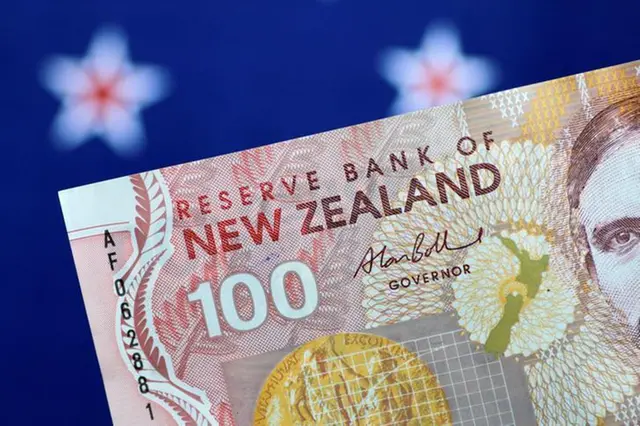Australian Dollar Consolidates Strength on Economic Data and US Dollar Weakness as Major Events Loom
The Australian Dollar (AUD) continues to consolidate its strength as the US Dollar (USD) stays weak in the face of economic uncertainty and the pending major data releases. Australia’s GDP growth beat forecasts in Q4 2024, bolstering confidence in the economy, while China’s better-than-expected Services PMI further underpinned the AUD. On the other hand, the US is grappling with rising trade policy concerns as Commerce Secretary Howard Lutnick signaled potential reappraisal of Trump’s tariffs that have already influenced market mood. The AUD/USD pair is quoted around 0.6260, with technicals indicating support at the nine-day EMA and potential downward risks if major support levels are breached. While the market waits for the US ISM Services PMI and ADP Employment Change, AUD’s strength is once again the currency market focus. KEY LOOKOUTS • Australia’s Q4 GDP grew 0.6%, beating forecast, affirming economic strength and backing the Australian Dollar during global uncertainty. • Commerce Secretary Lutnick suggested President Trump is considering reversing recently raised tariffs, injecting uncertainty into the US Dollar and affecting market sentiment. • China’s Services PMI rose unexpectedly to 51.4, signaling steady economic growth and offering indirect support to the AUD through trade relations. • The upcoming ISM Services PMI and ADP Employment Change could influence the USD’s trajectory, shaping short-term movements in the AUD/USD pair. Traders are closely watching key economic and policy developments impacting the Australian Dollar and US Dollar. Australia’s better-than-anticipated Q4 GDP growth of 0.6% has strengthened optimism in the economy, while China’s better Services PMI indicates stable growth, indirectly benefiting the AUD. In contrast, uncertainty surrounds US trade policy, with Commerce Secretary Howard Lutnick hinting that President Trump might roll back recently imposed tariffs, creating market volatility. With the US ISM Services PMI and ADP Employment Change due for release, investors are weighing the possible influence on the USD, which is still under pressure. These factors combined determine the short-term direction of AUD/USD, with traders keeping an eye on technical support and resistance levels. Australia’s robust Q4 GDP expansion and China’s better Services PMI underpin the Australian Dollar, while uncertainty surrounding US tariff policy continues to keep the USD under pressure. Market participants are looking for pivotal US economic data releases, including ISM Services PMI and ADP Employment Change, to gauge the influence on AUD/USD momentum. • Q4 2024 GDP expanded 0.6% QoQ, above market expectations and further underpinning economic resilience. • The USD is under pressure with market sentiment weighed down by economic uncertainties and trade policy issues. • Commerce Secretary Lutnick hinted Trump might revisit recently imposed tariffs, injecting volatility in the forex market. • The sudden spike to 51.4 indicates consistent economic growth, implicitly backing the Australian Dollar. • Speculators look out for confirmation of releases of major US economic data to determine the short-term direction of the USD. • The two trade close to 0.6260, with support at 0.6271 (nine-day EMA) and possible downside towards 0.6187. • Global trade uncertainty and economic data continue to play a crucial role in driving movements of the forex market, determining AUD/USD trends. The Australian Dollar continues to be strong amidst major economic events and international trade uncertainties. Australia’s GDP growth of 0.6% in Q4 was above market forecasts, indicating the strength of the economy despite global difficulties. Also, China’s better-than-anticipated Services PMI at 51.4 indicates consistent growth, indirectly favoring the AUD because of robust trade relations between the two countries. In the meantime, the Reserve Bank of Australia (RBA) is still evaluating economic risks, with policymakers keeping a close eye on inflation and labor market performance to inform future monetary policy. AUD/USD Daily Price Chart Chart Source: TradingView On the international side, US trade policy continues to be a pressing issue, as Commerce Secretary Howard Lutnick suggested that President Trump might revisit the recently levied tariffs. The uncertainty surrounding the trade actions has caused apprehension regarding their long-term effects on economic growth and global trade patterns. Additionally, the US suspended all military assistance to Ukraine, creating yet another layer of geopolitical stress for the market. While investors wait for major US economic releases, such as ISM Services PMI and ADP Employment Change, sentiment in the market is subdued, with attention to economic stability and policy guidance. TECHNICAL ANALYSIS AUD/USD currency pair is trading around 0.6260, with sideways action as the market conditions are evaluated by traders. The pair has immediate resistance at the nine-day Exponential Moving Average (EMA) of 0.6271, and a stronger resistance at the 50-day EMA of about 0.6303. The Relative Strength Index (RSI) is still below 50, which reflects a risk-averse market sentiment with weak bullish pressure. On the negative side, the major support is at 0.6187, the four-week low seen on March 5. A fall below this level might trigger further drops to 0.6087. With future US economic data releases, AUD/USD price movements might experience greater volatility, impacting short-term technical trends. FORECAST The Australian Dollar (AUD) can witness further gains if economic data keeps supporting positive sentiment in the market. With Australia’s Q4 GDP beating forecasts and China’s economic data indicating resilience, the AUD has fundamentals to support gains. If risk sentiment remains steady globally and US economic worries continue, the AUD/USD currency pair can challenge resistance around 0.6300 in the near future. Also, any signals from the Reserve Bank of Australia (RBA) regarding holding or changing monetary policy could affect investor sentiment and add more support for the currency pair. Downside-wise, the AUD/USD pair remains susceptible to external threats from US trade policy and economic uncertainty in the world. If the US Dollar strengthens on more robust-than-anticipated economic news or a change in Federal Reserve policy expectations, the pair might experience fresh selling pressure. A breakdown below the key support of 0.6187 would initiate a more severe pullback to 0.6087, the lowest since April 2020. Also, geopolitical tensions, including the US suspension of military assistance to Ukraine, may enhance market volatility, which would trigger risk-off sentiment to weigh on the Australian Dollar.












